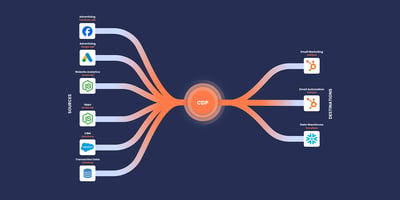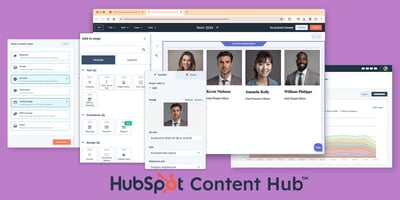As with any training, training your sales teams on HubSpot starts with a solid plan and an understanding of your goals. Deciding what you want your team to know is crucial to building a solid plan. Once you have the plan together, map it out into digestible sessions.
Fit your business
Each business has its process, especially when it comes to sales. These could be based on:
- Deal information to smooth internal and external processes
- Specific contact/lead information
- Details you collect at a company level
%20.png?width=437&height=717&name=Image%201%20(Fit%20Your%20Business)%20.png)
It is important to remember that you can require certain information when collecting data. Help your sales team understand why this information is collected so that they know what and why you are collecting these data points. This will help you gain their buy-in when they use HubSpot.
Salespeople like to have an easy process to follow that eliminates the need for extra admin. Putting yourself in the shoes of your sales team and their day-to-day, make sure that HubSpot is there to help them be better at sales. You have the chance to set up the team permissions so make sure that you are showing functionality that your sales team is going to have access to.
.png?width=479&height=512&name=Image%202%20(Fit%20your%20Business).png)
HubSpot has some amazing tools that salespeople have at their disposal. Leverage some of these in the training session to help create value for sales teams. Some quick examples are:
- Templates
- Snippets
- Views
- Filters
- Lists
Be Practical
People often learn more from experience than they do from not doing something themselves. Using practical examples is going to be a great way to train your sales team. A helpful tool for this within HubSpot is the Projects function. Use this to build a practical training session or multiple projects if you want to get specific. This will open up the opportunity for you to create a full sales journey for your team. Track this journey from when a lead comes in and they handle them, from any of your deal sources. Salespeople will have to create contacts, companies and deals and use the sales flow that you have in place. This process will help us understand why the processes flow in a certain way.
To get to this stage you have several options. You can build a Lucid chart for example. The aim here is to make sure that the journey is mapped out for your team to see and come back to should they need to.
.png?width=457&height=532&name=Image%203%20(Be%20Practical).png)
Set the Tone
Having a standard procedure for all of this will be important. Keep a standard for notes, naming conventions, and data that gets tracked in HubSpot.
Clean data is a vital aspect of any HubSpot portal. While there are ways to clean it later, it is a much better practice to follow a strict standard. This clean data is going to help with:
- Reporting
- The AI tools
- Cross-pollination of deals across team members
- Easy handovers to other departments
.png?width=408&height=725&name=Image%204%20(Set%20the%20Tone).png)
Sticking to this process will help you keep a cleaner more accurate pipeline. A pipeline is one of the most valuable aspects of any sales team. Teaching your sales team how your pipeline works is imperative to successful HubSpot training. As with the other aspects of HubSpot, pipelines are highly customisable, so if you have a unique process or not on HubSpot sales teams should have a solid understanding of how the pipelines are set up and how they function. Knowing what information is required when a deal moves between stages keeps a better and more accurate record of how strong or weak your pipeline is.
Valuable notes
As it is with many other tools some elements are more important in HubSpot. In sales, these are often (but not limited to) close dates, required fields, permissions and properties (deals, contacts and companies). How you navigate this could depend on what permissions your team has within HubSpot.
Closing statements
Failing to plan is planning to fail. Be sure to have a plan laid out that can be used again in the future should you increase or replace team members. If you lack time or resources, don't be afraid to look for help. This could be done with either a HubSpot Partner or the HubSpot Academy.





